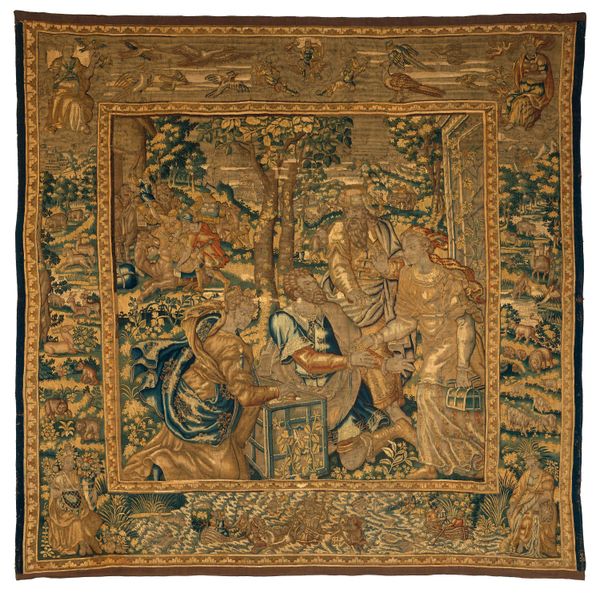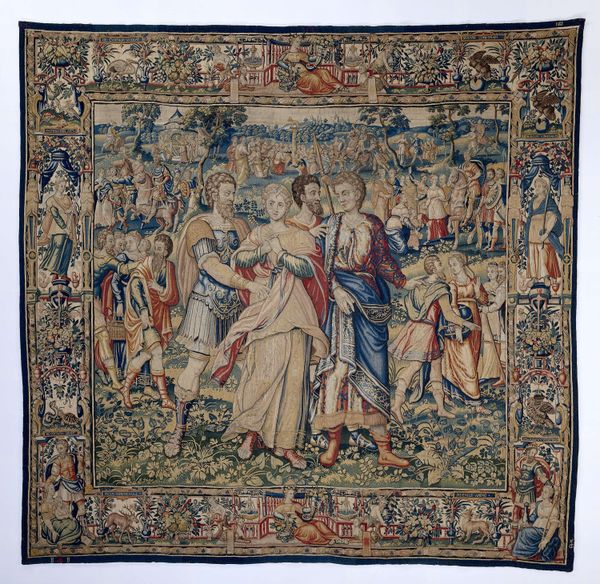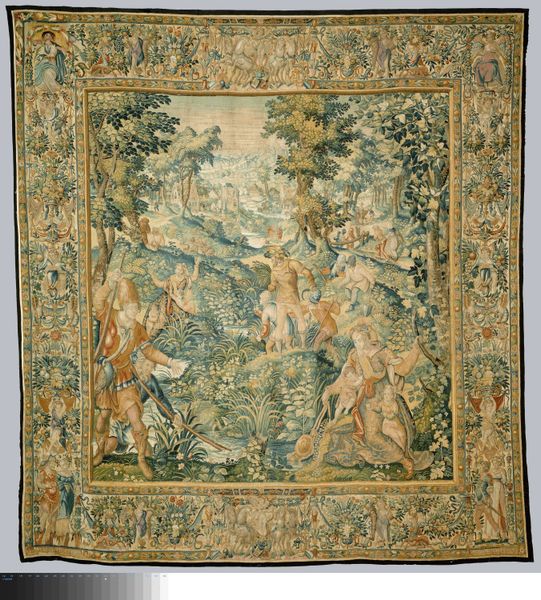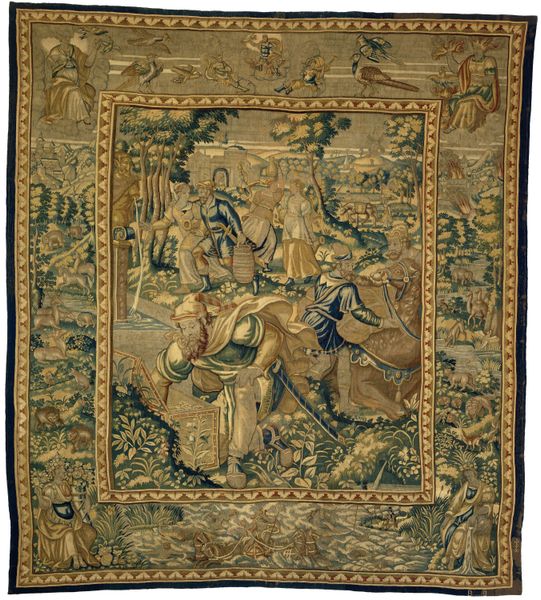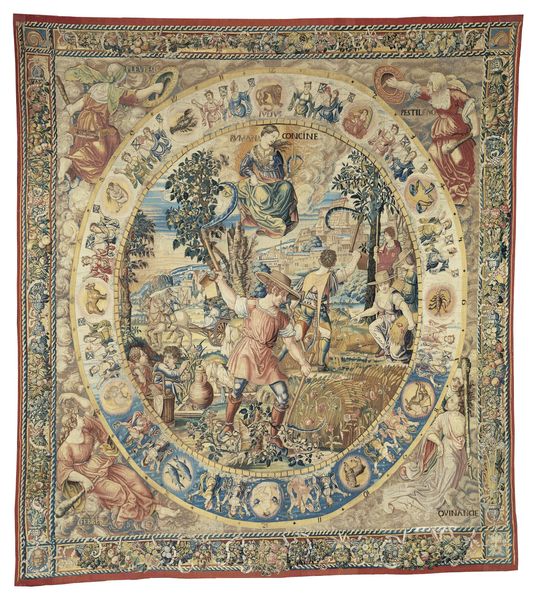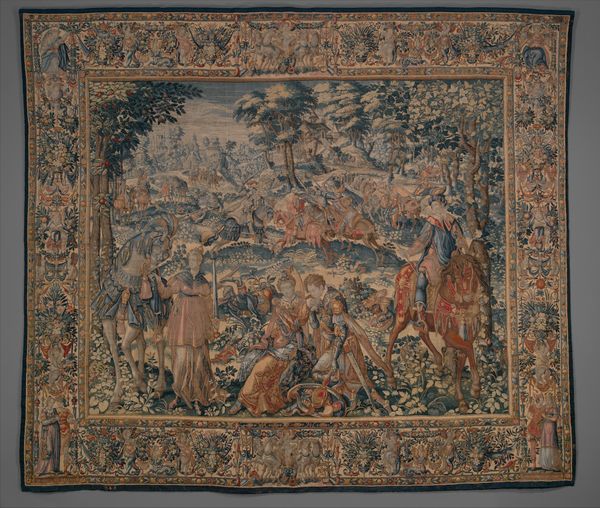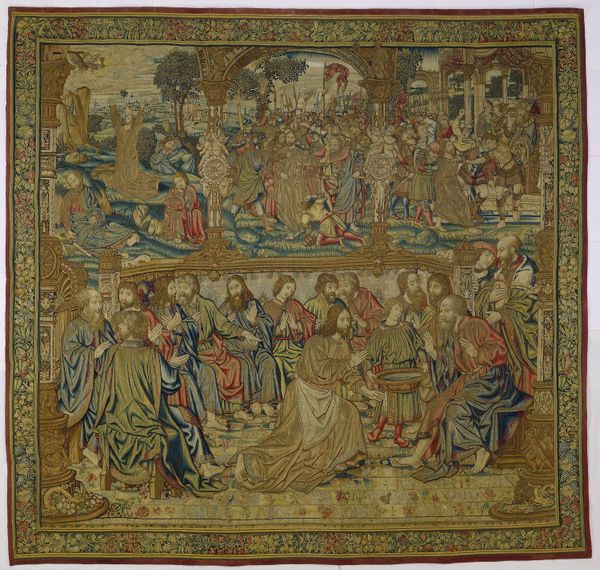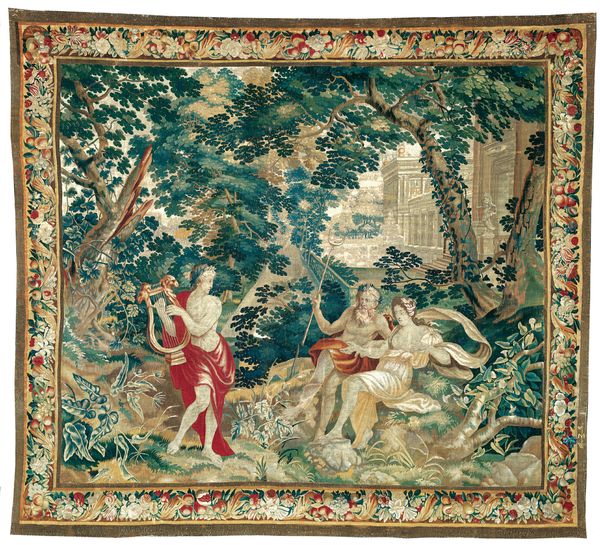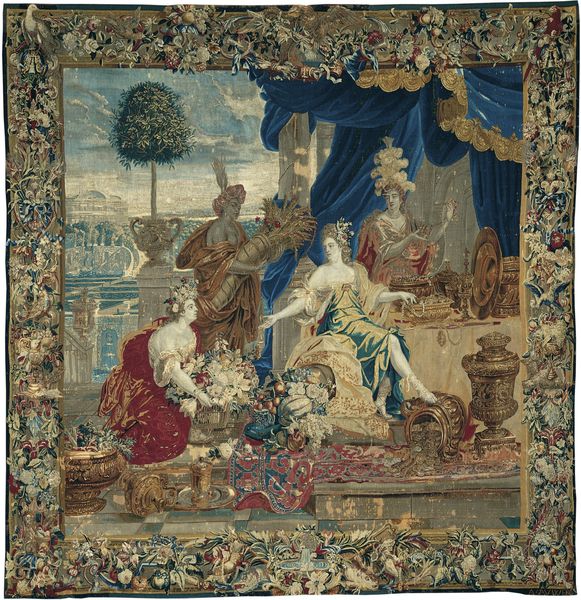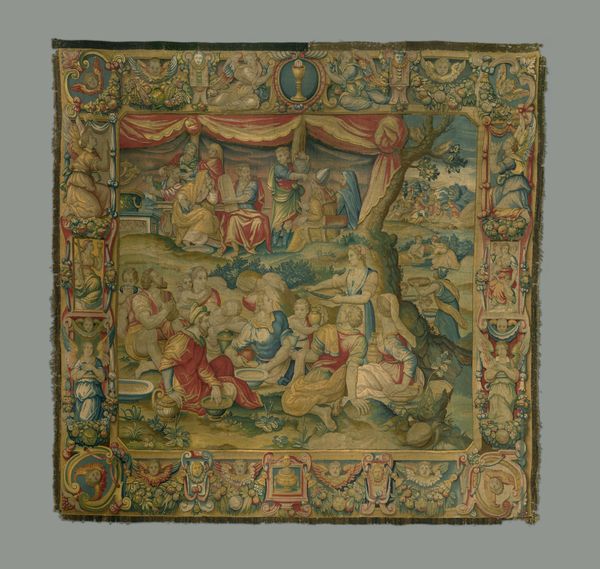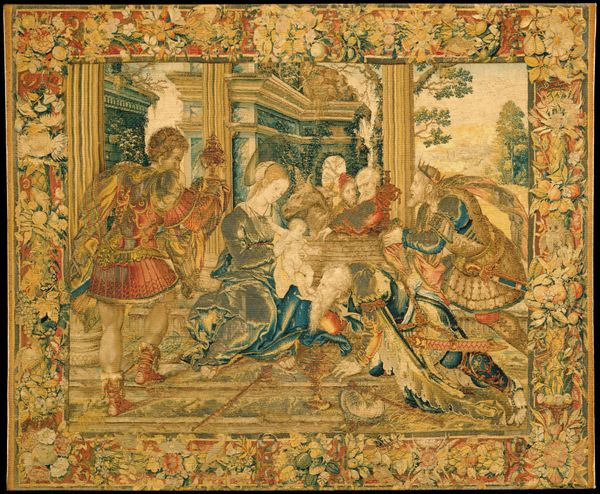
weaving, textile
#
medieval
#
narrative-art
#
weaving
#
textile
#
figuration
#
decorative art
Dimensions: height 305.0 cm, width 299.0 cm
Copyright: Rijks Museum: Open Domain
Curator: Immediately, I’m struck by the intricacy and the evident skill involved in the making. The way light plays across the surfaces, despite being a woven piece, suggests a real mastery of the medium. Editor: Agreed. It's quite detailed! This tapestry, "Rebekka en Eliëzer bij de bron," likely created between 1575 and 1600 by an anonymous artist, depicts a biblical scene. Tapestries such as this one fulfilled vital functions as insulation, decoration, and vehicles for transmitting narratives. Curator: Exactly. Consider the labor investment in producing such a large piece – the preparation of the threads, the dye processes, and of course, the hours at the loom. What was the role of guilds at that time and how did they influence textile manufacture? I would argue that the piece’s value lies in revealing aspects of its means of production, materials used, and conditions for those creating it. Editor: Absolutely. Textile production at that time was interwoven with trade routes, and economic factors heavily shaped the artistic expression. Furthermore, the imagery and narratives promoted social cohesion and ideological values, influencing public discourse, particularly through widespread iconographic tropes like Biblical stories that provided moral guidance in domestic contexts. It really goes to the core of the politics of imagery in art production. Curator: Seeing this also makes me think of the domestic sphere— who commissioned the piece and who engaged with it on a daily level? What was their relationship to the labor that was poured into this material, in the social and financial inequalities implicit within these acts of patronage and ownership? The medium and the social setting in which they're created are fascinating here. Editor: The symbolism woven in has potential to deepen our understanding of Renaissance social values. We see here not only a beautiful object, but the manifestation of interwoven religious beliefs, economic forces, and political imperatives, shaping its impact on its intended audience. The question for me remains, in what ways did the production of tapestries help create social capital? Curator: Well, this discussion has enriched my view on the art. Editor: For me, it has given me a new avenue for analysis of how political imagery can dictate artistic mediums.
Comments
No comments
Be the first to comment and join the conversation on the ultimate creative platform.
